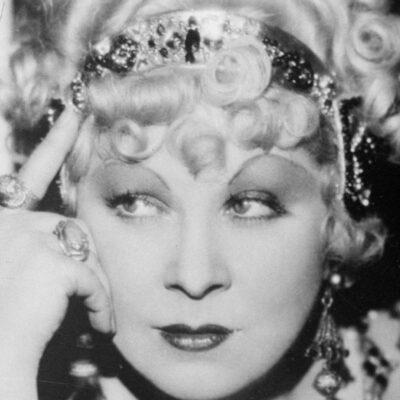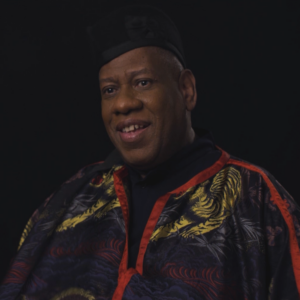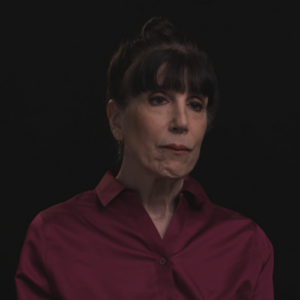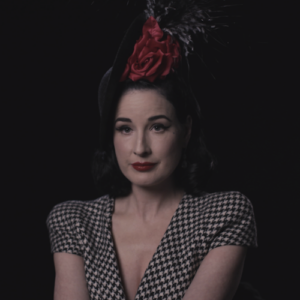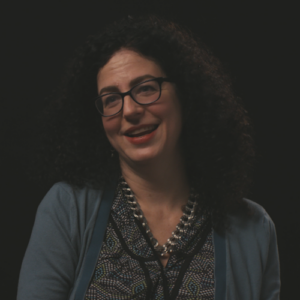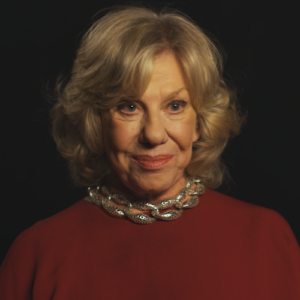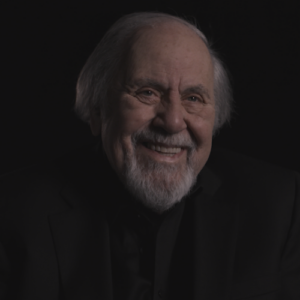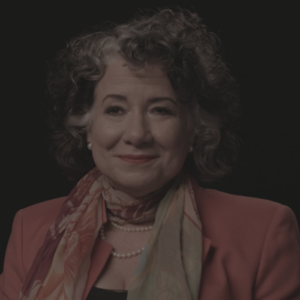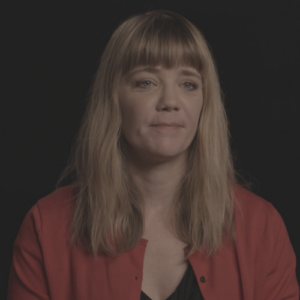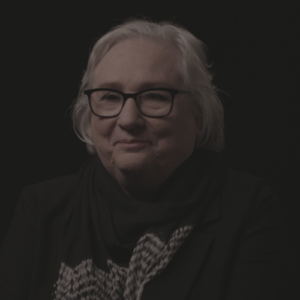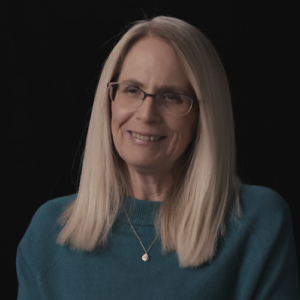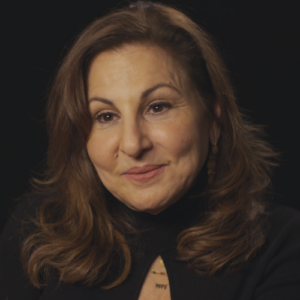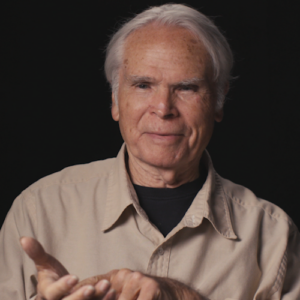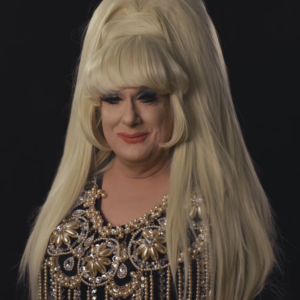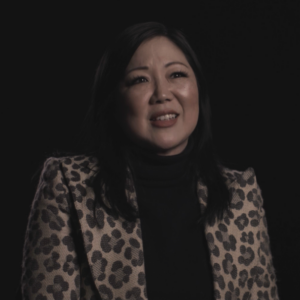Tom Doherty: Well, we study American censorship because what we study American censorship because what is suppressed in any culture is something that’s there that the officials don’t want to be there. And as Freud teaches us, this will usually return in another form. So anything that’s repressed in motion pictures, for example, will often be there by implication or insinuation or sometimes even just by his absence, the stuff that’s not said on screen. And particularly for the people who wanted to regulate culture at the turn of the 20th century, the folks that were called the moral guardians, the Victorians are the great progressive movements of the late 19th and early 20th century. You know, these people wanted to regulate child labor, to make it keep kids out of the factories. They wanted a better hygiene, better education rights for labor, anti-alcohol. That this part of this progressive movement, it was kind of this curious blend of progressive and reactionary impulses. You know, we want women’s vote, but we also want prohibition. You know, those are the very same people. And these people also want to regulate motion picture content. The moral guardians felt that the culture would not be best served by having this unbridled expression of violence, eroticism, you know, self-aggrandizing individuals moving through space that this can be very threatening to a Victorian culture. And so there are many movements across the country to regulate motion picture imagery and to to keep an eye on this revolutionary new medium that we’re not really quite sure of its impact. We’re not sure what it does. And one thing we’re really scared about is it seems to be attracting the working class immigrant groups, the people who in our mind are not yet Americans, and that they need to become Americans and to be guided into a kind of good middle class Victorian Americanism. And that the movies seem to be going exactly the other way by celebrating other kinds of values and impulses.
Interviewer: And so I like what you said before. What we censor is what how do we what we sense is what we’re worried about? Yeah.
Tom Doherty: Well, what we censor is what we censor are things that are there, but we don’t want them to be there. Right. Officially. And almost always. What happens when a government agency wants to censor stuff is it will return in another form. Sometimes you’ll actually see it on the screen, but it won’t be mentioned or it will be mentioned by implication or by insinuation, or it’ll be an off screen space that you can imagine. Yeah. And so if you look at movies of the first 20 years, actually, many of them are, you know, really kind of wild and unbridled. They have these, you know, fantastic impulses in them. And you can see why the guardians of official traditional Victorian culture would be very upset by some of these images of, you know, visceral violence and eroticism that seep very quickly into American motion picture making. It’s probably not accidental that the film that is usually considered the kind of the the starting gun for American movies is the Great Train robbery, which literally has a starting gun in it where it kind of both opens and ends with a desperado pointing a gun at The Spectator. And you probably couldn’t have written a more symbolic opening for American cinema than this, you know, close up of violence right at us. And that’s what motion pictures to kind of do, basically from then to now.
Interviewer: And then in terms of sexuality.
Tom Doherty: You want me to mention the kiss again? Okay. Well, and and just as motion pictures or this screen for violence, they’re also a screen for sexuality. So if you look at an 1896 film, a very brief film of a middle aged couple smooching called The Kiss. That’s the kind of gesture and eroticism that you probably wouldn’t have seen in traditional Victorian culture. You know, like on the streets in public, but you can see it in the movies. And very quickly, the movies become places where you can go to see things that you can’t see in life, but it will teach you how to behave in life. So one of the things that really starts worrying the social guardians of the early 20th century is what movies are teaching us about courtship and male female relationships. And typically you have maybe a kind of aggressive male with a female that’s all too receptive to his aggression, or worse yet, in the minds of some more. Audience. You have a female who is explicitly trafficking in her sexuality and seems to be celebrating it. And we in the audience are also taking a good gander at that sexuality as well and getting some titillation from it.
Interviewer: Great. Good set up for me. Yeah. So at what point then does censorship start to seem like it really is going to affect the industry?
Tom Doherty: Well, in 1915, a Supreme Court decision In 1915, the Supreme Court rules that motion pictures are, quote, a business pure and simple. And that means that motion pictures can be regulated by city, state and by implication, the federal government under the US Constitution says the US Supreme Court motion pictures have no First Amendment rights. They’re just like any other form of commerce. And just the way the Food and Drug Administration can regulate meat products that go across state lines, city boards and state boards can regulate the quality and the content of motion pictures. They can cut stuff out. They can ban films. They can shut down films. And this to us today sounds unaccountable. But for most of the early part of the 20th century, basically from 1915 until the 1950s, movies could be censored under the US Constitution. No constitutional rights at all. And so one of the consequences of the state having the power in America to censor motion pictures is that the motion picture industry decides being that censorship is a necessary part of the motion picture business. It’s more efficient, it’s more cost effective for us to do it ourselves. Now, we still want to get that stuff that the censors don’t like in our movies because we know that attracts the audience, the violence, the sexuality. But we’re going to have some kind of regulation board in Hollywood that will do that in order to keep the very expensive and really hassle up. Now, to keep the very expensive task of censorship at the city and state level. LAB No, no. Ask me a question. What was it? No.
Interviewer: Tell me what happens in 1922.
Tom Doherty: Well, in 1922, the moguls get together and form a cartel. And that cartel is called the motion picture Producers and Distributors of America. It still exists today under its name. Change the Motion Picture Association of America. They’re the people who radar movies. So that cartel is formed in 1922 in response to a series of really sensationalistic sex scandals in Hollywood where directors are found dead, you know, stars are found overdose and starlets commit suicide. And the most notorious of all the scandals of the early 1920s is the the fatty Arbuckle scandal in which one of the most celebrated comedians of the day is charged with a really horrible rape murder. He’s tried three times in a series of widely covered, sensationalistic trials, and in the last he’s found innocent. But by then it’s too late. His career is ruined and Hollywood is configured in the minds of many Americans as this Sodom on the Pacific. It’s kind of this, you know, a Babylon where innocent girls from the Midwest go to be come stars and end up being ruined for life. And in order to allay that image, the moguls form the cartel. That is the motion picture producers and distributors of America. And they appoint as its head a guy named Will H. Hayes is the former postmaster general in the Warren G. Harding administration, a Republican power broker, a very respectable Presbyterian elder who’s also a nonsmoker and a non drinker. Plus, he’s wired to the big money and Wall Street and to power in Washington, and he will become the front man for the motion picture industry until 1945. And he’s really the guy who kind of leads the motion picture industry out of this kind of wildcat hucksterism into a mature industry in the 1920s. And he oversees most of what we now call the classical Hollywood era. And although he’s usually configured as a kind of front man economically and politically, he really is the guy who helps move the industry from adolescence to maturity.
Interviewer: Great. Thank you for catching us up here. So is he actually does he have is he actually censoring?
Tom Doherty: Well, Hayes isn’t on. The ground in Hollywood censoring movies or engaged in production in any meaningful way. He probably couldn’t tell a 35 millimeter camera from a 16 millimeter camera. He’s he’s not the hands on guy. But what Hayes does is he kind of gives the industry a respectable image for most of America. And his name is attached to what becomes for the next 30 years, the all purpose signifier for Hollywood censorship, which is the Hays Office. Now, the Hays office is the name we give to internal self-regulation by the motion picture industry in Hollywood. Okay. And in the 1920s, the Hays Office, so-called, basically promulgated a kind of namby pamby set of informal guidelines. They were called the don’ts and be careful or the do’s and don’ts. And it’s sort of a list of commandments about things to be careful about. You don’t want to be too violent or too sexy. You want to respect the good official. You want to respect the the good authority of church and state, that sort of thing. Now, up until 1930, these do you want me to get into that right now in 1927, in order to enforce these kind of really, if unspoken, almost ephemeral codes of decency, Hays founds something called the Studio Relations Committee, and he appoints his publicity helper, a guy named Colonel Jason Joy, to charge. He appoints Colonel Jason Joy to be in charge of the Studio Relations Committee. In this committee, which has representatives from the major studios on it, will kind of go over scripts and maybe the final print of a motion picture to make sure that it doesn’t rile the censors in any given state or municipality and suggest changes and maybe encourage the industry to be on the side of decency and moral uplift. And this board starts in 1927. And for the next several years, there are, you know, occasionally a dispute. But the thing you always have to remember about the Studio Relations Committee is that it has no power to enforce its suggestions at all. So a studio film maker can basically get around the Studio relations committee by distributing this print to any theater that wants to show it that they have power as a suggestion and jawboning, but they don’t have the power to actually dictate their commands.
Interviewer: Great. What is okay, So then before we get to the enforcement of the code, let’s just reiterate that there was a code in place in the twenties, but the terms that were relatively lax and we call those pre-code because sort of.
Tom Doherty: You know, in the 1920 there was a namby pamby set of general guidelines that the Hays Office wanted the studios to abide by. But they were.
Interviewer: You know.
Tom Doherty: But the guidelines didn’t have a philosophy behind them. And they were they just had the power of suggestion. Hays wanted to have like an ethos of decency, but he didn’t really set up the mechanism to enforce that in the in the 1920s.
Interviewer: Great. And as a result, what kind of films do we see, particularly in terms of women and sexuality wealth?
Tom Doherty: And throughout the 1920s, one of the results of this lack of rigorous censorship is that Hollywood is actually producing a good deal of motion pictures that have images of violence and sexuality. The the flapper, one of the great feminist figures of the 1920s is portrayed on screen by people like Clara Bow and and Joan Crawford. And these are figures that really sell their sexuality. It’s a new kind of female type, very different from the Victorian girl that maybe D.W. Griffith was so still celebrating in his motion pictures, really a late 19th century Victorian innocent, pure, virginal figure. By the time you have somebody like Clara Bow working in a department store, she is a figure of sexuality who flaunts her sexuality. And we in the audience are supposed to accept that. And in large measure we do that. The female types you start seeing in Hollywood who smoke and wear makeup and who aren’t afraid to show a little leg are a very different type than their mothers 15 years before.
Interviewer: Great. Can you just so we have the term pre-code. Define pre-code.
Tom Doherty: Sure. Pre-Code. Hollywood is the term we use to describe this brief window of opportunity for four years in Hollywood. When you do not have rigorous, enforced censorship in 1930, in March two, in 1930, a Jesuit priest named Father Daniel, a Lord and a motion picture Catholic. In 1930, a Jesuit priest named Father Daniel Lord and a very influential publisher of Motion Picture Trade periodicals named Martin Quigley, writes something called the Production Code. Now, this is in response to the sexuality of the Jazz Age and this new element that’s been introduced in the late 1920s, which is synchronous sound dialog, and now in the late twenties, women and men can say things that in silent cinema were only implied. And so by the late twenties, you’re starting to see more explicit verbal sexuality in relationship to wider images. So there are films like The Wild Party, which basically lives up to its title in 1929. Moral Guardians see these films. They’re threatened by this new element of film grammar, which is not just the dialog, but how dialog makes everything more real. If you look at the films of the Silent Era, they’re they’re theatrical. They’re in an ethereal realm that’s different from reality. But when sound comes in, we’re in reality. And one of the responses to this is the Moral Guardians get increasingly upset by what’s shown in the wild jazz age and the movies of the wild jazz age. And in response to this two very influential film critics. But then scores of them in response to this. Lord and Quigley write a document called the Production Code. And unlike Hayes’s do’s and don’ts, the production code is a philosophy of censorship. It’s a definitively Roman Catholic document written by a Jesuit priest and a Roman Catholic layman. And the Catholics have been censoring stuff for 1500 years. So they’ve got a little little experience at this and they don’t. And the thing that you always have to remember about the production code is just not this list of do’s and don’ts. You know, don’t show explicit nudity. Don’t show explicit violence. I don’t utter blasphemy on screen. It’s a whole philosophy of censorship that wants to inject values into film, not just censor a film after it’s made, but it wants to make film a kind of moral universe in which the guiltier, punish, the virtuous are rewarded. The authority of church and state is upheld. And contrary to popular belief, it doesn’t mean all Hollywood movies and happily, it does mean all Hollywood movies under the code. And morally, that is when we walk out of the theater at the end of a production code approved film. We know where we should be morally, and sometimes that means a harsh message, like the wages of sin is death, or that duty and sacrifice have to come before your own personal pleasure. So the production code is a very rigorous philosophy of cinema, with very rigorous, rigorous codes of what you can and cannot show. And those two things, I think, are crucially important. It’s a philosophy and a set of commandments. It’s written in 1930, and the moguls and the MPAA say, Yeah, we’ll abide by the production code. Sounds good to us, right? It’ll keep the Catholics off our back and it’ll keep the moral guardians off our back. It’ll placate some of the state censorship boards. But as with the studio relation committee regulations, there’s no enforcement mechanism. So for the next four years, the studios disobey the production code. And this period is called the pre-code period. And it doesn’t mean there wasn’t a code. The word pre-code means that there there’s no enforcement mechanism and the code doesn’t have any teeth. So for the next four years, there’s this window of opportunity coinciding with the desperation of the Great Depression and Hollywood’s need now to attract audiences with anything that they can throw on the wall with all kinds of images of violence, sexuality and even insurrection. Because the early thirties is also a time of real political, economic trauma. And this stuff gets into so many of the code films. And today we tend to really delight in the violence or in the sexuality of pre-code Hollywood because it looks so different from what follows. But what you also see in pre-code Hollywood cinema is this. This rebellious insurrection, this sense that American culture is just, you know, going off the rails. If you look at pre-code Hollywood films again and again, you’ll see like hordes of people marching in the street with an uncontrolled rebellion. And whether it’s, you know, crowds descending on a bank during a bank run or whether it’s, you know, the mob and Frankenstein, you know, going up to the windmill to burn the creature in pre-code. Hollywood really has a sense of fear and insurrection and chaos about it that goes along with the kind of unbridled violence of the gangster films and the sexuality of the bad women films.
Interviewer: Let’s talk about those bad women films. Could you mention a couple like Red.
Tom Doherty: Red Headed Woman?
Interviewer: Yeah.
Tom Doherty: Yeah. Well, the Pre-Code era is awash in women who traffic in their sexuality and are not punished for it. One of the best examples is Redheaded Woman, a film starring Jean Harlow, in which she’s basically a marriage wrecker who sleeps her way to the top and she gets away with it. Yeah. And at the end of the film, she’s got her sugar daddy in the backseat of a limousine. And up front is Charles Boyer, the chauffeur who’s winking at her in the rearview mirror. Yeah, that’s how the film ends. So the wages of sin is not death in red headed woman. Or you get a film like Baby Face with Barbara Stanwyck, who also, you know, how would you say it is using horizontal means to rise vertically in the in the social system? And at the end of the film, it kind of has a Hays office ending that’s really not very persuasive and which she kind of, you know, gives up her want and ways. But 97% of the film is Barbara Stanwyck. Just you know, zooming through a parade of men as she gets to the top. And so these characters that are today beloved by a generation of film fans, could only come about in this brief window when Hollywood did not have regulation strictly, that is, before the mechanism of the production code kicks in in 1934. And you see expressions of sexuality, violence and insurrection that you flat will not see afterward. And we we tend to think in the 20th century that things get more freedom as the century goes on and the standards get looser. But the history of Hollywood cinema actually defies that. The films that you see before 1934, when the production code kicks in, are far more independent and free and sexy than the films after 1934, which is really seems to go against our sense of sort of the progress of expression in the 20th century. The motion picture industry doesn’t abide by that at all because in 1934, the production code comes at a time.
Interviewer: Great. And that’s a great point. I’m glad you made that to bring Mae West into this. Yes. You know, so even at this freewheeling time, there was a ban against her. Oh, yeah.
Tom Doherty: Well, Mae West had been, you know, a brand name at least since the mid 1920s with her sensational and scandalous hair since Mae West had been a brand name, at least since the mid 1920s. In American culture, with her sensational and scandalous Broadway plays, notably Sex, in which she gets busted for obscenity. She’s sentenced to ten days in jail. She serves eight. As she said upon her release, she gets a two off for good behavior. And of course, this is great publicity even when the show gets shut down or censored. People are flocking to it. And with shows like Sex and Diamond, Lil, especially Mae West, has become this representative character for American sexuality. But the weird thing about when you talk about that, you know, the interesting thing about Mae West in the 1920s is she’s not a 1920s girl at all. She’s not a jazz baby. She’s not a flapper. She’s a throwback to another time, the gay nineties. And if you look even at her figure, this hourglass figure, you know, with the outrageous hats and and the feathers and the courses and the costuming, you know, she is very much out of time, except in one key way, which is her unbridled, unashamed display of sexuality. And in fact, she’s much more on a shamed than the jazz girls. Yeah. And she’s a different female body type, too. If you if you think of the kind of trim, athletic girls that are being promulgated by Hollywood in their twenties and. Curtis. You know, they they look nothing like Mae West. Yeah. That her her figure is this. This throwback to a previous time. So she’s taking advantage of the looser standards of the Jazz Age, but packaging it in this old fashioned Victorian form. And that’s part of her bizarre appeal that she’s both in time with the 1920s, but she’s out of time because she’s a gay nineties girl. And that blend of sort of the traditional and the modern is in many ways a key to her, her particular appeal. Yeah.
Interviewer: And how do you know is she is from 1930. How is Hollywood regarding her what what did they were they wary of her? What do they want her to come.
Tom Doherty: WELCH Up in in the late 1920s, a whole group of screenwriters and actors and comedians come into Hollywood with the onset of sound and sound as the is the crucial dividing line here, because it’s impossible to imagine Mae West without a sense of sound. Because it isn’t her figure that’s attractive to you, but it’s what she says. Her wisecracks, her intonation, her insinuations. It’s all verbal. Her sexuality is verbal, not physical. Any chorus girl in any Warner Brothers movie of the early thirties showed more flesh. What was sexy and enticing and dangerous about Mae West is her voice, her language, you know, the famous wisecracks that she would just snap off to any guy who was in her vicinity. So you need sound to have Mae West on screen without sound. You know, she’s without without sound. Mae Mae West, she’s neutered.
Interviewer: Well, do you know much about how her arrival in Hollywood and how she came to make movies and whether or not she was invited, especially in terms of censorship?
Tom Doherty: Yeah, well, up in the 1930s, there’s this window of opportunity for characters like Mae West and whether it’s the Marx Brothers or whether it’s Mae West, these Antarctic chaotic characters who rely upon wisecracks and dialog for their humor and appeal now have a place where they can go in Hollywood, where they didn’t in the silent era. You know, I mean, the Marx Brothers wouldn’t be funny in the silent era. Mae West wouldn’t be funny in the silent era. So there’s this opportunity now and just the way playwrights and screenwriters, you know, mostly a lot of Irish and Jewish journalists come out to Hollywood in the great gold rush of the early sound era. There’s an opportunity for actors and performers and stars like Mae West to also make the entry into the obvious place that you would go, which is which is motion pictures. And so Paramount Pictures tries Mae West out in a supporting role in her motion picture debut in 1932, night after fall, night of night, night after night, I always you know, it’s the George Raft, right? Yeah. I think they die within a week age.
Interviewer: Before we do that. Do you know how she wrote her diamond? Diamond Lil was banned from being made into a movie.
Tom Doherty: Well, that’s later at. Right. That’s with. She’d done it wrong.
Interviewer: Yeah, well, that becomes you get them wrong but I guess I’m trying to get at Hollywood was wary of her that night because they.
Tom Doherty: Were as always with Hollywood they see and Mae West, this great financial opportunity. But with Mae West, there’s always risk. I mean, sometimes there’s a risk of actually having Mae West arrested. So reviewers of some of her Broadway shows would say get to this one quickly because the show might be shut down or it be censored or you’ll have to look at an understudy because Mae West might wind up in the hoosegow. So there’s always that balance between risk and opportunity, financial reward. And maybe you’re gonna get too controversial with Mae West. So Diamond Lil is sort of her trading card in 1928. It’s a phrase everybody would know a name, everybody would know. And Hollywood seasoned Mae West, a character that with sound, can now be exploited on the motion picture screen in a way she couldn’t in the silent era. So she’s tried out in a kind of a supporting role in a 1932 film night after night. And it you see her on screen and you realize immediately she’s the most electric thing about this rather tepid melodrama. And Mae West is not the kind of girl that is going to be a second banana for long. And in 1933, she finally gets her long awaited motion picture debut where she’s center stage in her first film called She Done Him Wrong. Now the the title Diamond Lil was so electric and toxic for the Hays Office, they wouldn’t allow that title to actually be. On a marquee. And so there’s a lot of debate about what you’re going to call the film and what you’re going to call the actress Mae West in the film. They wanted to keep the the box office value of the title Diamond and Lil’s. So they kind of lady little Lady diamond. And eventually they decide on a title that’s maybe actually even more enticing and suggestive, which is she done him wrong. And and that’s basically a paraphrase of Diamond Lil. As the trade critics put it, everybody knew that even though she’s called Lady Lou, it’s Mae West playing Diamond Lil and it’s basically the same narrative structure as her Broadway play.
Interviewer: Great. Why wasn’t the code enforced between 1930 and 34?
Tom Doherty: There was no enforcement mechanism for the production code when it is adopted in 1930 by the moguls. It’s just sort of a gentlemen’s agreement. Okay. So they the production code didn’t have an office to enforce it. It was the old Studio Relations Committee. And frankly, the other reason it’s not enforced is the two guys in charge of it were kind of not especially effective. One 1930 The the moguls agreed to the production code, but it had no enforcement mechanism. It was a gentlemen’s agreement. It had no no teeth at all. So you could jawbone or suggest, but you couldn’t really demand that a motion picture producer cut something. And that creates this window of opportunity for images and language in pre-code Hollywood that you’re not going to have four years later.
Interviewer: Great. You know, 1932 is when Mae arrives in Hollywood night after night. Can you just sort of give us a general state of Hollywood at that time vis a vis censorship rules of the depression and where what was going on at that moment?
Tom Doherty: Well, from the beginning of the motion picture industry, it was seen as a kind of depression proof business. People always went to the movies no matter what the economic climate. Finally, in 1930, because of the financial outlay of converting studios and theaters to to sound, and also because of the nosedive in the economy with the Great Depression. Motion Picture box office is declining, and the motion picture industry had never really experienced that before. And so they’re desperate to bring audiences in. And so they’re trying new things. And one of the things they’re trying in the pre-code atmosphere of non-regulation is, you know, more violence with the gangster films, more sexuality with the bad women films, and they’re going to take a flier on somebody that they kind of know is incendiary, like Mae West.
Interviewer: Great. So she makes these two first films, which are big hits. Yeah. Is there any censoring going on?
Tom Doherty: Her first film, she done him Wrong, is subject to some censorship. The Hays Office demands that it not be titled Diamond Lil because that’s a toxic title and everybody knows and they they modify a few lines. But you can’t censor Mae West Once you put Mae West on screen in an unregulated era, you know, you sort of see what you get in the Mae West film. So even though she’s not quite as bawdy or explicit as she would be on the Broadway stage or in vaudeville, you’re getting pretty much what Mae West is in her first film because you don’t have the regulation and the studios are willing to take a flier on this, especially when it seems that Mae West is popular not just in the cities where people saw her on Broadway, but in the hinterlands as well, that exhibitors from around the country are saying, hey, our theaters are suddenly full again because people want to see this amazing phenomenon that they haven’t seen on screen before. Mae West. And people really hadn’t seen anything like it. Or maybe it’s better to say people hadn’t heard anything like it, because what Mae West gives in her films is this unashamed sexuality that is registered in dialog, and she’s the one giving the wisecracks. And no matter who is talking to Mae West, they’re basically a straight man for her snappy, sexually charged comeback. In a way, Mae West really doesn’t give double entendres. It’s single entendres. You know exactly what she’s suggesting when she invites you to come up and see her some time. You’re not going to go up there to discuss the European situation. It’s clearly a sexual overture. And that’s what was so sensational and so wonderful about Mae West and so new. You had seen women traffic and sexuality before and a. Occasionally you’d seen women on screen know with the occasional wisecrack. You know Barbara Stanwyck in Baby Face or Jean Harlow in Redheaded Woman. But you hadn’t seen a woman wisecrack sexually. You know, from the from the title credits to the end credits. And to do it with a kind of brazen on a shame oddness that Mae West brought to her two pre-code films she done Wrong And I’m No Angel.
Interviewer: Do you think she same as she claimed in many others, that she saved Paramount?
Tom Doherty: Oh, yeah, without a doubt. Mae West saved Paramount from receivership in 1933. She was the queen of the lot, and everybody at Paramount knew it because her films were such spectacular successes and a time in which those kind of successes were few and far between.
Interviewer: Great. So what happened towards the end of 1933 that signals things are going to change?
Tom Doherty: Well, and in late 1933 and Mae West plays a powerful role in this, the. In late 1933. And Mae West plays a really pivotal role in all of this. The Pre-Code era’s Licentiousness, Chaos, Violence starts inspiring a group of censors to organize in order to regulate Hollywood cinema. They see Hollywood cinema as really promulgating us an errant sexuality of violence, of chaos and irreverence that they don’t want motion pictures purveying. And in late 1933, a group of Roman Catholic bishops and cardinals get together and form something called the Legion of Decency, the National Legion of Decency. And this is an organization that wants to bring decency back into Hollywood cinema or the National Legion. The national issue of decency wants Hollywood cinema to abide by the Catholic morality that is articulated in the production code but is not being enforced. Now, in 1930, the moguls had said they would abide by this Roman Catholic document, and for the last three and a half years, they have not abided by it. On the contrary, the movies have gotten more sexually charged, more violent, more chaotic, more irreverent. And the Catholics organize under the banner of a group called the Legion of Decency. And at this time, Roman Catholic priests and bishops had a lot of power over their parishioners, especially in local parishes in the big cities like Chicago, New York, Boston, L.A. And they could actually prevent their parishioners from going to motion pictures. And in Catholic churches across America on Sundays in Knights of Columbus Halls and Ladies Fidelity’s and parochial schools. Roman Catholics start raising their hand and taking what is known as the Legion Pledge. And it’s basically a pledge that you will not go to immoral movies on pain of threat to your immortal soul. And in those days, many Roman Catholics would take that seriously and not go to the movies. Now, of course, not all abided by the production code, but enough did to effect the box office. I have a personal story about this. I don’t know if you’d want it.
Interviewer: Well, I’m curious, though, what percentage of the country was Catholic at that point?
Tom Doherty: Well, I say about 30%. But the reason Catholics get so much power is that unlike Protestants or Jews, they’re hierarchical, an organization. So the Roman Catholics can establish a policy at the top, and 25 million Roman Catholics will adhere to it, where each Protestant church is congregational or each Jewish temple is congregational an organization. So they all have different policies depending upon where they are. But the Catholics have a central authority, and this gives them a power out of all proportion to their numbers, even with Hollywood cinema. So to take an example, my father, 1933, he’s 12 years old. He wants to go see I’m No Angel. A film that he’s heard about, Right? He walks to the local theater in Norwood, Massachusetts. And outside the theater is his parish priest, who, of course, knows my father on site. And my father just continues walking because he’s not going to buy a ticket to this film in front of his parish priest. Now, if you multiply that by 10 million, you can sort of see the influence that Roman Catholics have over the motion picture box office. And the Catholics are particularly furious at the Jewish Hollywood moguls because the moguls said in 1930 will abide by your Roman Catholic document and then they violate it for the next three and a half years. So when the Legion of Decency starts putting pressure on Hollywood and Hollywood says, okay, will abide by the code, the Catholics say, not so fast. You fought us back in 1930. We want something in writing and we want an enforcement mechanism for this code. And we want our guy at the head of this new office here creating to enforce the code called the Production Code Administration. And the guy that they pick is a fellow named Joseph I Irene is a devout Roman Catholic, a former press agent, really wired to the Roman Catholics. Hays That brought him out in 1931 to work in Hollywood for public relations. And in the ensuing years, Breen kind of weasels his way into the Studio Relations Committee and becomes a powerful presence, and he’s kind of the obvious guy to head this new agency because he’s acceptable in Hollywood, because he knows how the business operates by this time, and he’s acceptable to the. Catholics because he’s a well-known Roman Catholic layman who takes this job seriously. So in July of 1934, the Production Code administration is created with Joseph II brain as chief enforcer. And from then on, the production code really has teeth because the New York bankers say that we will not finance your movies, Hollywood producers, unless you get clearance from Joe Breen. So Breen has to give a financial greenlight in order for the movies to be financed. And that gives him enormous power. So for the next 20 years, anything produced by the classical Hollywood studio system has to have the imprimatur of Joseph II brain. And it’s the literal imprimatur. It’s a seal. You can actually see the production code seal. The Motion Picture Association of America Oval, which says approved by and that seal means this film has been vetted by me. Joe Breen at the Production Code Administration. And it will have the values of the production code in it. And from then on, Hollywood cinema changes, at least manifestly. You’re not going to have the same freedom, sexuality, violence that you had in the Pre-Code era. After Joe Breen takes off, takes office. And in fact, the Hays Office, which is sort of the universal signifier for censorship around America in Hollywood, is known as the Breen Office, because everybody in Hollywood knows you’re not going to get your film released unless you clear Joe Breen’s office, unless Joe Breen looks at your film and says, This abides by the production code. It’s not going to get released.
Interviewer: Is there anything to say about Roosevelt’s New Deal as this play into this, maybe that see.
Tom Doherty: You know, only 1933 is kind of the key year in it’s Mae West year, but it’s also Franklin Roosevelt’s year is the year in which the the democratic chaos of the early years of the Great Depression is, in a way, soothed by the onset of FDR. You know, we have nothing to fear but fear itself, he famously says. And when he says that, it doesn’t alleviate the fear, but you get the sense that somebody is in control and that FDR, as New Deal is now going to promulgate, promulgate all these regulations that give a sense of control and the things that we love about pre-code Hollywood cinema, the sexuality, the chaos, the insurrection are things that if you’re alive in 1933, you had a lot of chaos and insurrection in your own life, you know, and you don’t have economic opportunity. And you get the sense that in 33 there is this widespread cultural need for control and regulation. And part of that is reflected under FDR. And part of it is going to be reflected very quickly under the production code as well. And for the moguls under FDR, New Deal, there is another fear that makes them want to enforce the production code, which is that, remember, movies have no First Amendment rights. FP FDR is proliferating all kinds of New Deal agencies regulating America economically and culturally. What he could have done, and there are proposals in Congress to do it, is to have a federal censorship agency. Why not? You know, we got the the WPA, the triple AA, all these other alphabets. We could have had a national film board under the New Deal. Will Hayes and the moguls go to Washington and they say, Don’t do that. We’ll actually regulate ourselves. You said you do that in 1930. No, this time we’re serious. We’ll create an agency with enforcement power and will appoint devout Catholic Joe Breen to enforce it. And you will see a change in our movies. And there is good. Is there word?
Interviewer: Great. Can you sort of walk through? So after Mayes, you know, made his first two movies, what would be the process for her to make more movie after 34 for someone like Mae West? What is the process with three?
Tom Doherty: Well, after under the production code, movies are now more strictly regulated and they’re regulated in the script process. And this is kind of the genius of Hollywood cinema censorship is that the Catholics know that the best way to regulate movies that will appeal to the moguls is the cost efficient way. And that means you submit your script in advance. Joe Breen marks it up. You send it back to the studio, you change some stuff, you send it back. You have a very long, complicated process before the cameras start to roll. And if that process is working well and efficiently, by the time the cameras start to roll, the fix is in, you know exactly what’s being filmed. And so there’s no room for improvization or ad libs. And if you see Mae West, give a line that might be licentious. You can cross it out or suggest a change. So after the production code. Mae West Films Belle of the Nineties is probably the best example which was going to be called It Ain’t No Sin. And in a way, if you’re Joe Breen, the thing you’re most concerned with is not the word sin, but the word it. Like what she referring to. And so under the code. Mae West is she she’s not totally neutered. But the thing that had made Mae West, which is this licentious language, the insinuation, you know, the double meanings or the single meanings now become increasingly constrained under the production code. In 1933, Mae West is the biggest star that Hollywood has. In 1934, who’s the biggest star? Shirley Temple. And that’s really the difference between pre-code and post code. Mae West, Shirley Temple.
Interviewer: Great. Do you know anything specifically about the kinds of things they were censoring from before the nineties?
Tom Doherty: Well, one one of the things and in fact the reviews actually say and belle of the nineties this is here for Joe Breen is you know the marriage at the end of it. Yeah. I mean Mae West doesn’t get married right. I see a man in your future. Only one. Yeah. That. That. Haven’t you ever met Mr. Right? Sure. Lots of times. Yeah. That Mae Mae West is an independent character, and under the production code, she becomes tied up. I mean, literally under matrimony. Yeah.
Interviewer: Do you think. I mean, I guess this is sort of obvious. Are we picking that up?
Tom Doherty: She gets married at the end of. She’d done them wrong. Theoretically, you know. Yeah.
Interviewer: But. But why do you think it was? You know, what was so sort of what was the aim of censorship to control independent women, do you think?
Tom Doherty: Yeah, yeah, yeah. The yeah. One of the things censorship under the production code is going to do is control the unbridled sexuality of women like Jean Harlow or Mae West or Barbara Stanwyck into a more conventional controlled model. And so after the production code, the kind of liberation you see, especially in the realm of sexuality in the pre-code films, is basically it’s not totally washed out because, you know, we go to movies for sexuality and erotic appeal, but manifestly they’ll always be at the end a kind of reassertion of traditional heterosexual normality. Now, under the surface, all kinds of impulses are bubbling up, even under the production code. But manifestly, the code establishes a kind of conventional morality. And especially with relation to women whose roles increasingly are going to be wife and mother under the code.
Interviewer: Were there censors literally on the sets even after the script?
Tom Doherty: No, no. Typically, a censor was not on the set because the pre-code script review or typically the censor didn’t have to be on the set because under the script review process, you knew what was being filmed. Now, if everything is going according to plan, by the time the cameras roll, the fix is in. Now, there was a final print review under the production code, but by then that’s the most expensive time. You’d be doing censorship. Like you’d have to film a scene after the sets have been struck. So nobody at any of the studios wants to do that. And also, you’re not going to betray Joe Breen. You’re not going to film something you said you weren’t going to film because he’s not going to believe you the next time. So over the years, everybody has kind of a reasonable relationship. And the other thing that happens in 1934 is the box office starts going up. And if you can make a lot of money with Shirley Temple and nobody’s calling you a smut merchant and you’re not getting a lot of hassle from the Legion of Decency and a lot of money with Mae West, who’s controversial and has her own vision of what film should be. You’re going to pick Shirley Temple every time. And so you get almost a financial incentive now to abide by the code, because everybody thinks Hollywood is making clean movies. They’re doing well at the box office. Yeah. Why disrupt things with Diamond Lil or Klondike? Annie? Yeah. Who’s being neutered anyway? By by the production code.
Interviewer: What efforts? How did she try to dodge them?
Tom Doherty: Well, the famous line is, you know, Mae West could read the Bible and make it sound licentious or, you know, read the Yellow Pages and make it sound, sound dirty. So one of the ways Mae West is trying to get around the code is not just in the lines, but what is more difficult to censor, which is her per her intonation. You know this the side glances that that she gives. The the the knowing look of a woman who’s been around. So you can’t censor everything. And then the producer could say, why do you you had no objection to this in the script phase. But increasingly, the Mae West that we know and love of the Pre-Code era does not appear on screen in the later 1930s. And if I might just say one other thing about, you know, Mae West is that in a way, the great character she created is her limitation because she can only be Mae West in her films. You can’t imagine Mae West playing a role as a, you know, in a melodrama, playing a self-sacrificing mother the way Barbara Stanwyck could or even in a screwball comedy. You can’t imagine her where she’s having byplay like Irene Dunne with Cary Grant. You know, she’s always the queen bee of the set, and the persona is always the same. This sort of sexually knowing woman who spits off wisecracks. And that becomes an act that after a while gets a little old and she never really goes away in the 1930s. And occasionally she’ll have these moments, like in My Little Chickadee. But that’s with W.C. Fields, You know, he’s not a romantic lead and she plays herself and he plays himself that she’s really trapped in the Mae West persona. There’s nowhere else to go for Mae West, where other sexually active girls of the early thirties, and I think especially of Barbara Stanwyck or Joan Crawford or Katharine Hepburn, they can go on to all other kinds of genres. They’ve got a range because their persona is not, you know, in amber the ways hers is. Like she doesn’t change from the 1920s into the 1930s, and you can’t imagine her going anywhere else. So this becomes a real limitation for Mae West as a screen character.
Interviewer: Great. Do you have a sense of how viewing audiences felt about censorship?
Tom Doherty: You know, how the mainstream public felt is a matter of some debate. My sense is that in 33, 34, when the production code comes in, the code guidelines kind of were broadly accepted by most Americans. You know, most Americans wanted movies to be decent, at least they would say so no matter what they went to, and that the need for order that you see reflected both in FDR as New Deal and in the production code, you know, there’s 33, 34 hour, you know, that bridge. You can really see that this is a time in which American culture does want order and regulation and control. Yeah. Now, increasingly, as America changes, and particularly after the Second World War, the code, which you might argue was a repository of broadly held values. Increasingly after the Second World War, the code seems behind the curve that the code is a document of another day, a document of Will Hayes of early Joe Brain, and that in the late 1940s, increasingly the production code is being challenged by Hollywood, and Americans are no longer willing to accept the kind of regulation of their public media that most of them were willing in the 1930s to accept that there was just an ethos. That expression does have some limitations, and especially in the Hollywood medium, which is going not just to us mature adults who have our moral character formed, but to young people as well. And in the late 1940s and early 1950s, this is challenged by Hollywood.
Interviewer: You know, you make an interesting point in your book about, you know, you don’t think moviemaking as an art necessarily suffered under censorship. You talk about that.
Tom Doherty: Well, I think you you could argue that one of the things the production code gives to Hollywood is certainty that it’s much better to deal with one reasonable guy on the ground in Hollywood, Joe Breen, who has a set of guidelines that are written down and articulated. And it’s better to deal with him than to deal with dozens of crazy municipal censors and 8 to 10 state censorship boards, all of which have their own guidelines and regulations and sensibilities, which are very seldom written down. And so the censorship that’s done under the production code actually very much like the other parts of the industrial system of classical Hollywood, lends a kind of certainty to the production process. Everybody, very quickly after the production code is enforced in 1934, knows the rules. They know Joe Breen is serious. They know you’re not going to get a green light from Joe Breen unless you abide by these guidelines. And you might think of it kind of like the rules and regulations of a sonnet, you know. 14 lines, three quatrains rhyming couplets at the end, a very limited artistic form. But within that form, you can have all kinds of tension and creativity. Sometimes you can even sort of fudge on a syllable. Maybe now you can’t get into free verse. Yeah, that’s the problem. So if you like sonnets, classical Hollywood cinema is probably your art form of choice. If you like free verse. You’re not going to get to do that in classical Hollywood cinema. There are always those limitations and there are industrial limitations, narrative limitations. You know, most audiences, you know, don’t want a horrible, terrible ending. You know, they don’t want the couple to get run over by a truck. You know, you don’t need the production code to tell you that, but you do under the production code, learn a set of guidelines. And one of the consequences of that is those sort of snappy double meaning insinuations that you can get under the code that are different from Mae West Lines. They’re they’re subtler. They really are double meaning lies. So if you listen to your screwball comedies or if you see Lauren Bacall and Humphrey Bogart, you know, have a dialog in In the Big Sleep, you know, you can sort of read underneath that dialog that they’re really not talking about race horses in the Big Sleep or Fred MacMurray and Barbara Stanwyck in Double Indemnity really aren’t talking about speed limits and traffic cops in the state of California. There’s something else going on. So that’s one of the I don’t want to say benefits, but it’s sort of one of the characteristics of classical Hollywood cinema.
Interviewer: Can you list some of the code points? I mean, do you?
Tom Doherty: Sure. Well, the most important thing to remember about the production code is a philosophy. It isn’t just a list of don’t do this. It’s a philosophy that says motion pictures are a form of moral communication. And it’s something that actually I think most of us would agree with today. You know, motion pictures have an impact. Motion pictures especially have an impact on young people whose moral character is not formed. And that is why we responsible adults and we responsible people in the motion picture industry realize that we have a duty to our audience not to give them bad messages. So that’s the basic philosophy that the production code sort of begins with. And I think most of us, if you read the philosophy of the production code, you go, Yeah, they’re kind of right about that. And then they go into a whole series of do’s and don’ts about nudity being forbidden, both in explicit imagery or in silhouette or even in sometimes insinuation. So one thing the production code doesn’t like is you couldn’t even sort of put the camera at a woman’s ankles and then slowly move up to give the sense of the spectators sexual rising, shall we say that, if forbid, blasphemy forbid, explicit violence. But most importantly, it wanted to give you a sense of a moral universe that God is in heaven and he’s regulating the world in a moral, understandable way that the film of form affirms at the end of the of the drama is a deeply Catholic vision, by the way. It’s a vision that says the virtuous are rewarded, the guilty are punished, goddess. And in his heaven, the authority of church and state is upheld and the world makes sense. And it’s also a philosophy that says your duty and your sacrifice are more important than your personal pleasure. Think of Jimmy Stewart and It’s A Wonderful Life, which is maybe the definitive movie under the production code. Here’s a guy who every 10 minutes in the film wants to do something that will please him, but that is not his duty in Bedford Falls. He wants to leave and go off and have adventures. He wants to serve in the military. But every time he wants to have personal pleasure, he has to choose duty and sacrifice. And it’s in many ways, it’s a very bleak film because it says your life is one of sacrifice and non personal pleasure. Now, the genius of that film is it assures us in the realm of heaven, everything works out okay. Right. But if you think of some of the anguished Jimmy Stewart shows in It’s a Wonderful Life, it’s really kind of unpleasant. Or in Casablanca, the other classic example, or at the end of the movie, we all want Humphrey Bogart to get together with Ingrid Bergman on the tarmac in Casablanca. But he can’t do that. Why not pick? Duty is more important than personal pleasure.
Interviewer: And for me. West.
Tom Doherty: Yeah.
Interviewer: Personal?
Tom Doherty: Yeah. And for me. Yeah, exactly. And for me, West Personal pleasure is what it’s all about. Taking personal pleasure. You don’t even get the sense that she gives all that much of it. You know that. That. Yeah, that’s a real good point. That that May was very a persona is one of personal pleasure and personal satisfaction rather than duty and sacrifice.
Interviewer: And for a woman to express that. Yeah. For the man, you know. Right. I mean, we sort of said this already, but what about her? Would it be particularly galling to these Catholic censors?
Tom Doherty: Well, what’s particularly galling about Mae West is that she is a sexually charged female who is not punished for it, that she’s an independent woman who enjoys sexuality with a lot of different guys. Right. You can’t expect a girl like me to, you know, across the country without running into a few men. You know, that that is what really disturbs traditional arbiters of American culture about Mae West. She’s this sort of revolutionary, subversive, transgressive character. And there are people in American culture in 1934 as today who want to clamp down on that.
Interviewer: I mean, you know, this is great, by the way. I’m just trying to see how we can summarize. I mean, do you think there’s a way it’s censorship certainly shortened her film career. Yeah, As we say, maybe it would have gone much longer. Her act was getting old.
Tom Doherty: Yeah.
Interviewer: Yeah. But do you think there’s a way that censorship made her.
Tom Doherty: Well, Mae West actually said this in the 1920s, that one of the things that gives her so much publicity is the censorship of the local authorities that they, in a way, with clamping down on her with her Broadway shows, Sex and Diamonds will make her career. And again, the thing about Mae West is she’s so unrepentant, you know, that she just puts it in their face. And so when she comes out of prison after her, after being busted for sex, she has that great line about, you know, I got two days off for good behavior.
Interviewer: Yeah. Do you know how she’s continually censored, though, even beyond the movies, radio, television.
Tom Doherty: Right. Well, the the next big Mae West, the next time Mae West really enters the public imagination is in this notorious 1937 radio appearance on Chase Sanborn with Charlie McCarthy and his his dummy. No, no, it’s with Edgar Bergen and Charlie McCarthy up the next time. Mae West has a huge censorship brouhaha, and American culture is not in the area of stage or film, but in the in the area of radio, which might be appropriate because she’s all about voice and dialog and she’s on a 1937 show. You know, Chase and Sanborn in which one of the very famous performance of the era, Edgar Bergen, a ventriloquist who for some reason is big on radio, which just sounds so counterintuitive, and his dummy, Charlie McCarthy, have some banter with Mae West, who in one skit plays Eve in the Garden of Eden, and she seems like she’s ready to get out of the garden even rather quickly. And then another sketch has some byplay with Charlie McCarthy, the the dummy involving a would. And this is seen as her irreverence and the same censors that had clamped down on Mae West and film come after her on radio as well. It’s a bit more of a blip, you know, in in 1937. Yeah.
Interviewer: But even into the fifties and television, she’s talking about her bedroom. Yeah. Why do you think even it’s like, what does she become?
Tom Doherty: Well. Well, Mae West being Mae West in whatever medium, Broadway, film, radio, television is going to be a representation of unapologetic female sexuality. And no matter what the particular line she utters, that’s who she is. So her her very presence, even more than sometimes the dialog that she utters, is going to be a challenge for mainstream moral guardians in whatever medium she happens to be trafficking in and presenting this persona.
Interviewer: And that thing, unrepentant female sexuality, to be something that, you know, even more than violence, perhaps. Yeah. Thing that censors are most concerned about. Yeah, maybe today, you know, 20th century throughout the 20th century, would you say?
Tom Doherty: Yeah. Because it is threatening to male authority. Right. That that to have a unapologetic female sexuality is disruptive to the male authority. And that’s in many ways what it’s all about. And as much as we men privately crave that, right, there’s also a threat to it, because in the end, Mae West doesn’t need us. Right. You know, Mae Mae West has stronger relationships with her maids than she does with any of the men in her film. Right. They really are straight men. They’re kind of devices. You know, they might as well be the suit than an actual male character. She’s never paired with a male of equal attraction, and it would be impossible to imagine her. In a screwball comedy, you know, where you you know, the duel between Cary Grant or Rosalind Russell or Cary Grant and Irene Dunne. You know, that kind of coequal ness of the couple. She never had that in her films. So the person Mae West was is, you know, enchanting and admirable and one of a kind. But it’s also limiting, I think. And in cinema, it’s it shows what she could never do on screen.
Interviewer: Yeah, that’s okay. Yeah. Do you think there’s something particularly American in Mae West Story, you know? Yeah, It’s Cole. Well, well, well.
Tom Doherty: The thing that’s typically American about Mae West is she’s a, you know, a self-made woman. Right. And she’ll self make a lot of men, too. Right. That she’s this this character who’s her own creation. And she’s, you know, part of a long line of people from Ben Franklin to Buffalo Bill. Of Americans who decide that I want to be this stage character. I want to be my persona in a way that there’s Mae West, who’s the character, and then there’s Mae West, the writer, director, star performer, who from the age of seven, kind of walks on stage and start seeing a person that she wants to be and, you know, is a totally self formed original character. You know, and and, you know, these people come along in American culture, you know, fairly regularly. These these one of a kind characters like Ben Franklin or Buffalo Bill. And I’d really put Mae West kind of in that tradition. And what’s interesting about it is that she’s a woman and it’s about sexuality. That’s what she’s trafficking in these other guys, traffic and something else like self-made success or Indian hunter. Mae West traffics in this a figure that has this moment in the 1920s where she can finally arise and she’s very clever to disguise it with irony and humor, as she always said. You can get away more with kind of a laugh than being serious about it. And by blending kind of the jazz age freedom that women are having and in the sexual realm with this old fashioned almost caricature of what a woman is, the famous Vanity Fair line that she’s the world’s most famous female impersonator. Yeah.
Interviewer: You know, I just thought of something. I wonder if she was more threatening because she was that character. I wonder if it had been just oh, if people would have said, Oh, that’s funny. But she didn’t. But the woman is different. Do you think there’s something to that?
Tom Doherty: Yeah, that’s actually a really good point, that the distance between Mae West, the persona and Mae West, the person, isn’t all that large. In a way, she’s like Buffalo Bill, because Buffalo Bill really was the Indian hunter. You know, he really was the tracker. He really was the frontiersman. And now he’s trafficking in that and kind of marketing it. That Buffalo Bill is the person he was. And Mae West is the person she was. You know, both Mae West. And so oftentimes, like if you know, you had a female actress who played, you know, sexually charged roles in Hollywood. There’ll always be the photo play spread about her being at home, you know, with her and what she what really gives her satisfaction is being a good wife and mother. Right. You couldn’t play that with Mae West to save your life.
Interviewer: Yeah, but do you think that’s why she was more uncensored?
Tom Doherty: I yeah, you know, that’s a good point, that because there wasn’t the distance between the Mae West persona and the Mae West person. It does make her more threatening because she can have it in both realms. She can have it both in her professional life and her private life and that sort of career woman dichotomy that, you know, is so often promulgated you don’t see with, in the end, the life and career of Mae West.
Interviewer: Why do you think this Mae West story is important to telling the really, really been done on film?
Tom Doherty: Why it is all that Mae West hasn’t gotten more of her do as a character because she is still one of the brand names of her era. Like we know who Mae West is, both from her film, imagery and her name. In the Second World War will be a common signifier for a life jacket because of the large press. So she becomes she’s an eternally known figure. But. You know, I think maybe her importance today is that she gives a model for independent smarts, female sexuality and, you know, self sufficiently so that she gives a model for smarts, sexuality, creativity and self-sufficiency. She doesn’t need a man. You never think of Mae West with a guy, you know, like even on screen, you don’t think of Mae West with a guy. And that’s special. I can’t think of another female character. You know, even so, you know, like independent women like Katharine Hepburn, you associate her with Spencer Tracy, right? That many of the women that we know, you know, have husbands sometimes several of them. And but you don’t think of that with Mae West. You know, she’s sort of this autonomous individual, you know, self-sufficient in a way. Very few female stars of the 1920s, thirties and beyond.
Interviewer: Is there anyone you can think of today who is her closest descendant.
Tom Doherty: Of Mae West? No. Can you?
Interviewer: No. I mean, we always get a different answer for this. Yeah. Funny. Nobody says the same thing.
Tom Doherty: Why? Well, the circumstances are so difficult now that that Mae West was one of a kind in the twenties and thirties. Yeah. And now, sure, there are many sexually active women who trafficking their sexuality. But doing it today is so much easier than doing it in the twenties and thirties and also doing it with this flair and this wit. And, you know, one of the one of the great way Mae West moments in cinema is at the beginning of I’m No Angel when you know all the guys are like cheering her and she’s on stage and she does her act and when she walks off, she kind of says, Suckers. Yeah. Like that. That wisecrack is so revealing because we hear it. She wants us to know we that she thinks we’re suckers, but she really doesn’t. We’re in on the joke. And so that’s part of the charm. She’s it’s kind of like P.T. Barnum that. That we knew we were, you know, going to be fooled by P.T. Barnum, that this wasn’t really a mermaid, you know, But we kind of like how he fools us. And we’re enjoying Mae West following us up and the other famous Mae West Line. I knew you could be had. That really is a double entendre that does have two meanings because you can be had in two ways. One is sexually, but the other is you can be fooled. I knew you could be fooled. I knew you were suckers. Yeah. And again, we’re in on the joke. So she’s not deceptive. She’s never a femme. Fatal? No. Right. I mean, you give Mae West your diamonds, you know, you’re not gonna ever get them back. And she’s. She’s not sort of an evil, transparent woman. She is exactly who she seems to be. You know, she’s not a tease. Like when she invites you into the room, you know, she’s not going to have second thoughts at the last minute. Right?
Interviewer: That’s a really good point. Yeah. It’s not a tough battle in that way.
Tom Doherty: Yeah, yeah, yeah, yeah. She’s And she never really leads the men to their death. I mean, she’d done him wrong, you know, But that’s his fault, you know, like, she doesn’t promise him anything, you know?
Interviewer: Great. Let me. So, Sally, do you think we’ve got the censorship story? Clearly.
Tom Doherty: I hope so, because the that you know, the key thing you need to know about the Pre-Code era is that it’s adopted in 1930, but it’s a charade. And it isn’t until 1934 when the Production Code administration is established to actually enforce the code and it isn’t. So. Joe Breen heads the Production Code administration and has the power actually to prevent the production and distribution of movies that it has teeth. And that’s that that’s really the moment it’s enforced. And you can tell the difference between early 1934 movies before July and post July movies that after July 34, you know, the enforcers in town and the films start changing. And by 1935, when everybody kind of knows there’s a new sheriff in town, they really change. And that’s the way it is for the next 20 years. And so brings a very important character in this. He’s really one of the most influential people in 20th century American popular culture. He basically has final cut over Hollywood cinema for the next 20 years. I mean, he’s the guy that decides what you’re going to see at your local movie theater.
Interviewer: Do you know how he did he ever see anything specifically about Mae West?
Tom Doherty: Just a second. I’m trying to think if I did, do I quote anything in the book? I’m not sure. Frankly, I have those files so I can look at those. And again, if you want to use them in a narration.
Interviewer: Can you talk about how Randolph Hearst figures into the censorship story? Because he comes he chimes in at some point and says, Well.
Tom Doherty: Well, the Hearst papers are allegedly representing the conservative Vox populi of the time, and Hearst newspaper chain is actually calling for federal censorship, that the movies are so licentious and have such a bad influence, especially on young people, that it’s time for the feds to come in and regulate the industry. So he’s one of the powerful editorial voices that, along with the Legion of Decency, is campaigning for a new, effective censorship regime. And if Hollywood doesn’t do it, then Washington should. And that’s the deal that Hollywood cuts. They look at Washington and say, We’re going to do it ourselves. We’re serious about it this time, and we’re actually going to do it. And they do.
Interviewer: Great. Um, all right, let me just look here. Um, I mean, is there anything else to say about the process that’s really just the reviewing of the scripts and going back and forth is cutting lines or forcing, Well.
Tom Doherty: The production code put it in place a very efficient and cost efficient way of censoring movies. Censorship is a part of the film business in the twenties and thirties and forties. That’s just the way it is. So the question becomes not how to get around censorship, but how do we do censorship in the most efficient way that will cost us the less money. Least money. And the and the answer they come up with is this racket that is the production code administration in which the cartel, that is the motion picture producers and distributors of America decides that their movies will be regulated by this agency. And this agency will assure that the movies abide by the decent commandments of the production code. And they do that to keep out the independents. And they do that to keep out Washington, D.C., from the censorship business. And you begin with the script and you toss that back and forth between the studio and the production code, sometimes for a period of months or years, if you want to make a novel or a controversial Broadway play fit for the screen, you have that long process and negotiation Brain gives you your tentative production code seal, which means you get your financing from New York. You film the movie, the production code looks at the final print and says, Yea, it’s just what you said it was going to be. You have our seal and then the movie’s released. So that whole system is really, you know, part of the industrial system of classical Hollywood cinema just as much as, you know, the factory soundstage. It’s kind of the quality control of classical Hollywood cinema and it helps the factory run on time.
Interviewer: You know the film Klondike Annie, do you remember that?
Tom Doherty: Not all that well, that’s the 30 310 35.
Interviewer: Or that they have a Bible, but it doesn’t say Bible on it. Oh yeah. It says this says something else. But they didn’t think Mae West wielding a Bible was going to pass muster.
Tom Doherty: Oh, really? Oh, well, she could read it. And it still sound dirty, right? Yeah, right.
Interviewer: Yeah. Good. All right. So do you have anything? Yeah, a couple things. Um, one is just because I think we missed it on the second pass, um, and I really liked it as an explanation. The the comparison to meet the. Oh, yeah. The films are a product. Yeah. Are regulated that way.
Tom Doherty: In 1915, the US Supreme Court ruled that movies are a business, pure and simple, and that meant that movies could be regulated just the way the Food and Drug Administration regulated meat that went across state lines, that movies weren’t a form of free expression. They were just another product of business commerce. And since the US Constitution allows the regulation of interstate commerce, we can regulate movies the same way They’re not protected by the First Amendment protections of free speech and expression. So they’re not like print material, they’re not like newspapers. They are just another business. And the Supreme Court sort of didn’t know what movies were. And the irony of this is 1915 is the Year of Birth of a Nation, one of the most influential films culturally and historically ever produced. The Supreme Court looks at movies and says, Now they’re they’re really not expression. And that’s the notion that Hollywood operates under legally until the 1950s. And it’s not until 1952 that movies are accepted as a form of expression and are given some of the rights of free expression under the U.S. Constitution. So during Mae West’s appearance in Hollywood, she is a sensible as any other personality.
Interviewer: Um, one other thing from the beginning I may be misremembering this, but did you say that, um, what’s censored is what people are interested in? Yeah, You said it at the beginning. Yeah, I remember.
Tom Doherty: I can’t remember what I said either. Well, well, typically what moral guardians and government officials want to censor and regulate in the culture is something that threatens their authority. And usually those are political or cultural or even sexual impulses. And so those are the things that the censor wants to regulate. Now, they will always bubble up in some other form. So even in the films that we see censored by the authorities, the impulses are there. Sometimes they’re there by reference or insinuation, sometimes they’re actually there by absence. In off screen space, you don’t see it. Yeah, but it’s there that the repressed always returns in another form. And that’s what, you know, governmental regulators and censors of any kind in the end want to do. They want to kind of control your mind. They want to control your vision by not having you look at the images or hear the speech that in their minds is verboten.
Interviewer: And immigration. Yeah, that again, how does immigration play into that?
Tom Doherty: Well, the motion picture industry rises in the late 19th century during those great waves of immigration into. Ellis Island, where you have all these non-American swarthy Eastern European Jews and Italians and Irish who are coming in and they are not yet Americans. And this is the audience for this emerging art form of the moving image, which of course you can understand without knowing any English at all. And the movies tend to be expressing a kind of, you know, violent, pleasurable, you know, sexually unbridled world that the Victorian censors, the older line white Anglo-Saxon Protestant Americans. Yeah, might feel very threatened by that. We want to teach you to the extent that we want to teach you how to be American. We don’t want you to go to the movies to discover how to be Americans, but the movies become the great transmission belt for American cultural values, both conservative and revolutionary. They teach us all how to become Americans. They teach us how to court a girl. They teach us how to behave at a nightclub. They teach us how to dress, and it has its impact. Immediately you start seeing people behaving the way people in the movies behave. You know, girls smoking, wearing lipstick and rouge, something that their Victorian mothers are appalled by, or guys affecting the stance of the outlaw, the gangster, you know, the the suave male. Yeah. That movies immediately are reflected in the behaviors of real human beings.
Interviewer: Great. Anything else from that beginning that you think you know? But one blanket statement that would be really helpful to feed you if you agree with that is just to say that Mae West was censored in every form of.
Tom Doherty: Oh, yeah, yeah, that that’s actually true. So I wouldn’t have a problem saying that. Yeah. It is interesting that Mae West seems to have been one of the only personalities in 20th century American culture who has the the honor, the distinction of being censored in virtually every form of mass entertainment of the 20th century, whether you’re talking about vaudeville, Broadway, motion pictures, radio, and then finally television, that there are people at every point in American culture during Mae West career who find something extremely threatening about the person Mae West is and the values that she is promulgating.
Interviewer: Great. Was really good. Yeah. So do I want to ignore my flowers? There are two questions on each page with the big arrows. And I thought like that. I think we skip that. I thought maybe could. Oh, okay. Yeah. The depression in the context of censorship was this idea that the depression had been caused by the lack of morals.
Tom Doherty: Yeah, yeah, yeah. That’s the stock market crash.
Interviewer: Right. But. But was there an idea that there’s a need for censorship, this depression? Was that a way of justifying it?
Tom Doherty: Oh, I don’t think so. Actually. That, that I think where censorship ties into the Great Depression is that in the early 1930s, in an era where you don’t have regulation, you’re starting to see those really insurrectionist impulses come out in cinema. I think of all the pre-code movies that have, you know, just mobs of people descending on banks or houses or, you know, centers of of public authority. You really get the sense of a chaos and a culture coming apart at the seams in the early 1930s. And that’s reflected in pre-code Hollywood because you’re not having any regulation by the government. And in 33 and 34, there’s that need for order. And it’s about a need for political order which is satisfied by FDR and I think a need for cultural order which is going to be satisfied by the production code and those impulses of chaos and insurrection and zaniness that we love in pre-code Hollywood are something that if you were alive in 33 and 34, might not be so entertaining to you. And so the movies we love in retrospect, are sometimes real box office failures in their time. The Marx Brothers, Duck Soup, You know, Tod Browning’s freaks. Yeah, those movies really disturbed people. And in that era, maybe you don’t want to be disturbed because there’s plenty in real life that’s very disturbing in 33 and 34. And so the impulse in the depression for order, I think, is something very understandable. You know, and you have it in politics with FDR and you have it in the production code with Joe Breen.
Interviewer: Were the censors saying the depression is a result of.
Tom Doherty: No, no, they were. No, no. The depression in a way, is, you know, a consequence of the wild party that was the jazz age, you know, and the sort of unbridled financial excesses of the jazz age. But, you know, I don’t think people are blaming the Great Depression on the movies. They might be blaming it on the wild wildness of the jazz age. And actually, they do. So, you know, one of the things is always so I was just talking about this or something is so, so interesting. And Fitzgerald talks about this in his great essay, Echoes of the Jazz Age in 1931, how everybody looks upon the jazz age as just this terrible party, you know, And we now are in the hangover phase, right? And it’s terrible. And you basically have ten years of hangover from the Great Depression or you have ten years of hangover from the jazz age. You know, that unregulated party we had. And, you know, we burned our candle at both ends and now we’re suffering the quite logical consequences that we should have known for ten years during the Great Depression. And we look upon the jazz age from the perspective of the Great Depression as this terrible mistake. And it isn’t until the 1950s that the jazz age comes back in a big way, because now we forget The Hangover and remember the party. It’s kind of like in college. You don’t remember the next morning, you know, throwing up at the toilet. But you, you know, you you kind of remember the great party you had because the pain is gone. And it really takes like 20 years for the culture to kind of look back on the jazz age with this sense of, oh, it’s fun. So you have movies like Some Like It Hot and The Untouchables on television. Now it becomes this sort of great moment. But at the time in the thirties, when you’re experiencing it, it’s like we’re suffering because of what we did in the 1920s. And that might also be one of the reasons Mae West, you know, kind of goes out of fashion as so many of the silent stars did. You know, Harold Lloyd, who’s associated with the Twenties, has no career in the thirties. And, you know, very few of the silent stars that we associated with the twenties kind of make the move. You know, part of that sound. But part of it is also, you know, we don’t want to think of those people anymore, you know, and Mae West might be lucky is that her persona is gay nineties and she’s you know, she’s not like Clara Bow who has no career in the thirties.
Interviewer: That’s interesting. Yeah. You talked about the Catholics being the sort of leaders of the church, but were all the religions equally as annoyed? Yeah.
Tom Doherty: Right. The Catholics are in the forefront of the movement because the Catholics can organize hierarchically and the word can come down from the cardinal or the bishop, and every Catholic in America will follow in step. Now, the Protestants are equally outraged by the immorality on screen. They’re just not as influential because they’re congregational and organization. And so they’re I mean, the Protestants are quite happy to let the Catholics take the lead. They’re a little annoyed that Catholic theology comes to dominate classical Hollywood cinema. You know, after a couple of years, they realize that you go to Hollywood and and see nothing but Roman Catholic priests. Yeah, you very seldom see a Protestant minister, but like Spencer Tracy and, you know, Bing Crosby, you’re playing, you know, priest on screen all the time so that the Protestants get a little annoyed about that. And conservative Jews also support the Legion of Decency as well, because if you’re a conservative Jew in America in the early 1930s, you don’t you do not want the industry that’s most associated with you, that that is the so-called Jewish moguls of of Hollywood configured as smut merchants. It’s an embarrassment to have, you know, the highest profile industry associated with Jewish Americans in the 1930s be associated with this obscenity and indecency. So there’s a broad inter-religious alliance for the reassertion of control over Hollywood cinema, even whether it’s conservative Jews, Protestants, conservative, all denominations, and the Catholics themselves.
Interviewer: Great. All right. Is there anything else that you feel that isn’t.
Tom Doherty: About Mae, about Mae West.
Interviewer: And. Yeah. Or anything about her career that you find interesting or. You know, I think we’ve covered a lot of ground.
Tom Doherty: Yeah. You know, my little it is really interesting, you know, that that she is the dominant. Like you they get co-equal billing in a way that in my little chickadee Mae West and W.C. Fields to by then revered vaudeville performers who have very finely wrought and well known persona are paired together. And, you know, one of the rare bright spots in her post code career, my little chickadee, in which there the plot is meaningless. They’re both playing themselves. And but she is really the dominant character there, that he is kind of a hapless, befuddled figure, certainly not a romantic lead. And it is she who saves his life at the end of the film. He’s about to be hanged. And if it weren’t for her kind of aggression and and her smarts, you know, he would allegedly be hanged by the end of the movie. So even in a situation where she seems to be equally paired with somebody, the guy she’s paired with, there’s no sexual or romantic threat at all, and she’s the dominant figure. And they exchange their taglines at the end of the film, you know, he says, Come up and see me. And she says, My little chickadee, which is kind of a in-joke in 1940.
Interviewer: What is your favorite film? Best film we think of first up.
Tom Doherty: I like she done them wrong. You know myself that I think that’s the one where you see, you know, Mae West at her most original, most unbridled. You know, you have an early Cary Grant who, of course, she takes off the street, you know, So she’s got a good eye for male talent, as we all know. And I always love the relationship she has with Louise Beavers, her African-American maid. You know, and then some of the women in the film as well, you know, and the way that the diamonds are just baubles, you know, to her. You know, I always think of Judge Gabor’s line, how she she never met a man that she hated so much that she gave away as gave back as jewelry. You know.
Interviewer: I don’t know. One thing I don’t know if we did in the in the beginning was the kiss. You talked about it, but what was the response to the kiss? What do people say about that?
Tom Doherty: Very well. In 1896, the the kiss, which is this rather to our minds chaste smooch between a middle aged, affectionate couple was for many Americans, something they had never seen on on screen before, that you’d never see that kind of public display of affection. And some audiences were delighted by it and found it charming. And other audiences, of course, starred as the opening wedge into a century of lewd sexuality.

